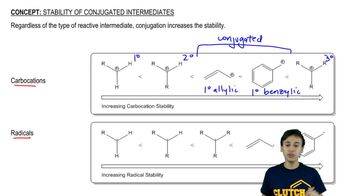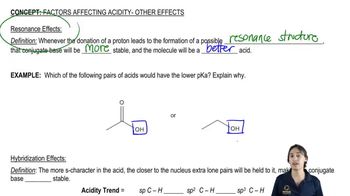Textbook Question
Rank these compounds in order of increasing enol content. In each case, draw the most stable enol.

 Verified step by step guidance
Verified step by step guidance Verified video answer for a similar problem:
Verified video answer for a similar problem:



 4:48m
4:48mMaster Tautomers of Dicarbonyls with a bite sized video explanation from Johnny
Start learning